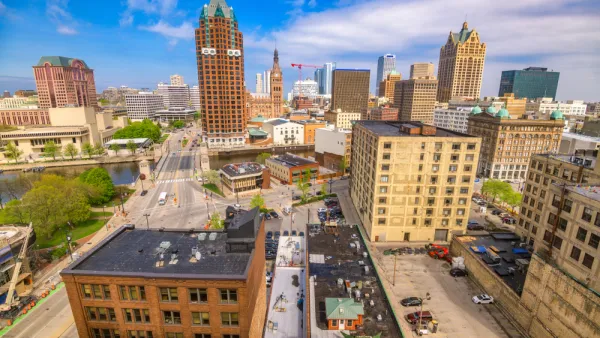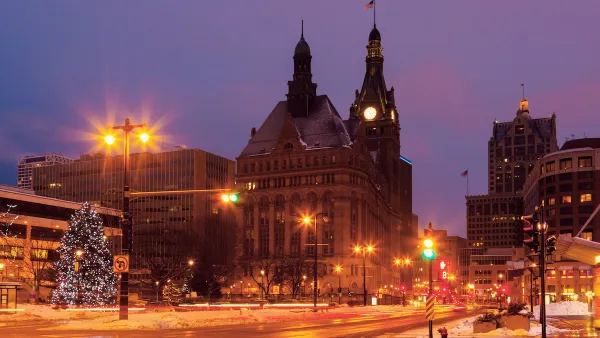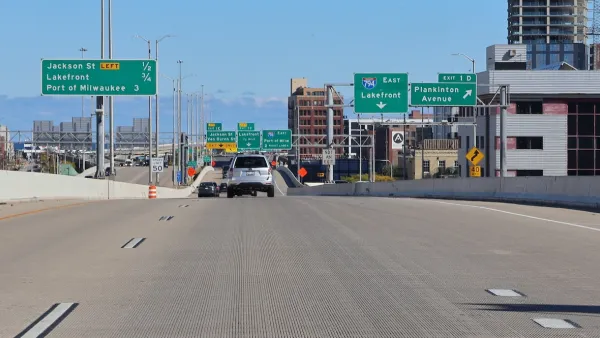One resident finds it surprisingly easy to live on Milwaukee's East Side without a car.
Milwaukee, a small, cold city without gold-standard public transportation, is probably not considered by many to be an obvious place to go car-free. However, this Sunday's Journal Sentinel highlights the ease with which one resident, who lives on the dense and walkable East Side, has managed to give up her car.
"I bike and walk almost everywhere. I've lost 14 pounds, causing one friend to declare this 'the car-free diet.'
I've got a new street-level perspective. I've noticed housing styles (the bungalows in Bay View, Polish flats near Brady St. and the brightly painted Victorians on Oakland between Brady and North) and the way some homes' landscaping reflects the seasons...
As my only transportation cost now is the occasional bus ticket to leave the east side or putting gas into the borrowed car, I've saved a lot of money by not having a car.
According to AAA's national office, it costs an average of $672 per month to maintain and pay for a car. You can save more than $8,000 a year by taking mass transit, says an American Public Transportation report released in July."
Thanks to Franny Ritchie
FULL STORY: Car-less on the East Side

National Parks Layoffs Will Cause Communities to Lose Billions
Thousands of essential park workers were laid off this week, just before the busy spring break season.

Retro-silient?: America’s First “Eco-burb,” The Woodlands Turns 50
A master-planned community north of Houston offers lessons on green infrastructure and resilient design, but falls short of its founder’s lofty affordability and walkability goals.

Delivering for America Plan Will Downgrade Mail Service in at Least 49.5 Percent of Zip Codes
Republican and Democrat lawmakers criticize the plan for its disproportionate negative impact on rural communities.

Test News Post 1
This is a summary

Test News Headline 46
Test for the image on the front page.

Balancing Bombs and Butterflies: How the National Guard Protects a Rare Species
The National Guard at Fort Indiantown Gap uses GIS technology and land management strategies to balance military training with conservation efforts, ensuring the survival of the rare eastern regal fritillary butterfly.
Urban Design for Planners 1: Software Tools
This six-course series explores essential urban design concepts using open source software and equips planners with the tools they need to participate fully in the urban design process.
Planning for Universal Design
Learn the tools for implementing Universal Design in planning regulations.
EMC Planning Group, Inc.
Planetizen
Planetizen
Mpact (formerly Rail~Volution)
Great Falls Development Authority, Inc.
HUDs Office of Policy Development and Research
NYU Wagner Graduate School of Public Service





























